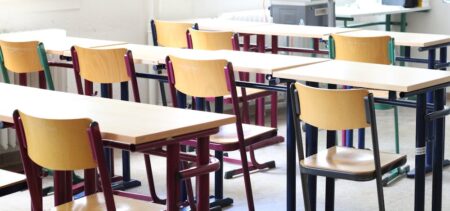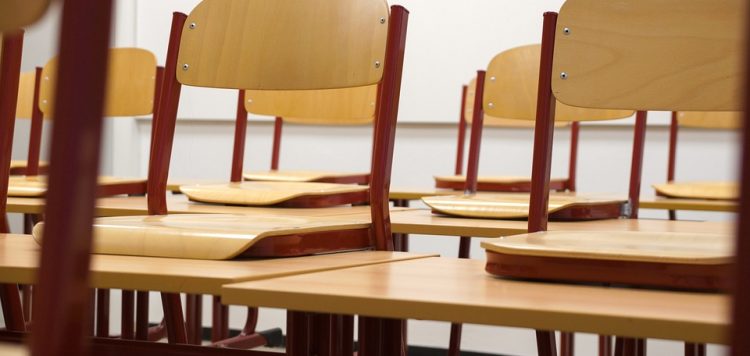While we are living times of change and using tech advancements once portrayed only in science fiction magazines, some things remain the same. Universal patterns and their physical translation need not change since they embody implacable relationships or rules, yet not all constant elements around us fulfill this condition. For example, interior design has changed over time, often illustrating the human thought changes and its boundary-breaking moments. One would assume classroom environment has also changed.
Functional interior design is a bit different, since it serves a lucrative purpose. However, industrial, office or educational institutions interiors can raise above their functionality (or rather enhance and improve it), by adding better design considerations into their making and by applying the related studies’ and survey’s findings into coloring, shape choosing, interior elements placing, lighting and so on.
Time is precious. In learning, time is essential. Wasted time is not an option, unless it relaxes the mind and empowers further focus. Happy, relaxed students have higher engagement and better motivation. In addition, it turns out that classroom design influences the way students perform.
The classroom environment as an action-shaper
It has been psychologically proven that nice, spacious classrooms that do not hinder student learning induce better focus, a general positive response, as well as a raise-up-to-the standards attitude. The broken window effect applies to learning environments as well.
Being confined to a certain enclosure for hours determines people to study the surroundings in detail – and attribute thoughts and feelings to this landscape. What the eye sees might in turn lift the mood or induce a plus sense of aesthetics – even the colors have certain effects on the human psychic, energizing, calming or bringing down the mood.
The spaces, shapes and colors surrounding students can definitely improve the learning process. Sound is another element that can benefit from an excellent design, allowing the speech to remain unaltered and pleasant, even for the students seated in the back of a classroom.
- Colors influence moods – warmer colors induce a feeling of comfort an appetence for activity; large, blank surfaces are suited for displaying students’ work, thus enhancing self-confidence and involvement in group/individual activities;
- A layout that considers lighting and the way it is positioned on work surfaces, offering generous spaces for each student and his/her gear as well as for group tasks, while making everybody feel part of the group, helps in recreating the “at home” feeling, thus stimulating thinking and the desire to prove themselves in students. In time, the idea of being part of a community goes hand in hand with a friendly, familiar space of learning, and students act and study with a feeling of belonging, taking pride in their lucrative endeavors.
Optimizing classroom seating for different tasks
Another infographic illustrates how the best classroom seating differs when considering independent work, group work or demonstrations – for example the teacher’s desk may be placed in middle front, or on the side of the students’ desks, depending on the teachers’ role and movements during the activities.
Improvements in class layout determine a 45% increase in academic engagement, while daylight exposure improves by 26% the math and reading tests results.
Other tips concern the walls’ colors and clear space percentage and the general recommended neatening of the learning environment.
Edutopia underlines how flexible seating and student-centered classroom placement encourages independent choice and problem solving and boosts performance. Affordable even on a budget, flexible classrooms redesign guides itself on the responsive approach and on some of the minimalism rules (getting rid of all unnecessary, old furniture; designating certain interior elements for group meetings or for time-off moments).
Flexible seating options open up choices for students, which can prove extremely rewarding especially for younger pupils. Given a certain power to decide upon the way they want to sit in classroom, many children may find it calming to choose a certain place, and in turn are able to better focus on the learning activities.
Here you may see a few different examples of effective room arrangements in learning, while a comparative analysis of horseshoe, stadium, groups and combination seating for the same classroom (with Pros and Cons for each arrangement), coming from The Cornerstone shows how the same space fits various activities and encourages the activities flow in different situations.
An additional example comes from higher-ed: the Montana State University classroom design guide lays out the design rules and option.
Personalizing classroom seating
As adults, we often find it difficult to fit into prerequisite rules when these do not take into consideration our needs and preferences. Why should we assume that students are different when it comes to preferred places, seating details, lighting position and angle, or simply intuitive choices?
If given the liberty of rearranging classroom-seating elements, do it in accordance with the students you have, not with some generic imaginary students. Maybe institute a few hours per week during which you allow your students to choose the way they are most comfortable in classroom – on the floor, moving their desks in various places, closer or further way from the teacher’s desk. Observe and note the patterns during a few such sessions, and plan your classroom new seating in relationship to your conclusions.
Sometimes the place a student chooses by him/herself does not stimulate his/her creativity or activity levels – it remains to follow through the effects on the learning process. Similar to the way a director acts when casting actors based on their typology or the opposite, you may try and engage some students out of their comfort zone (or out of their first seating choice). Take it as an exercise, and see where it leads you.
While as a teacher you may not be in a position to decide the classroom design, you may find yourself at liberty to choose the way students are allowed to seat, and develop your particular method of determining the most efficient and learning-enhancing classroom seating for each class of students – the results may be well worth it, so give it a try.





































